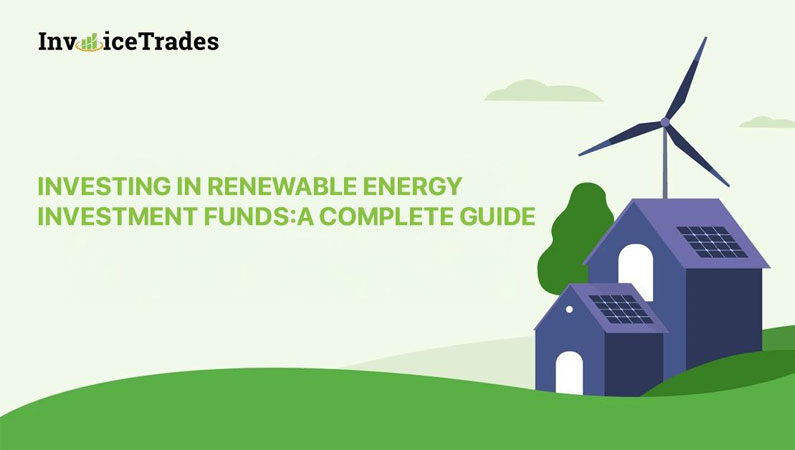Renewable energy has emerged as one of the most promising sectors for sustainable growth and high returns.
As the world transitions to clean energy, investments in renewable energy funds are not just about profitability but also about supporting global efforts to combat climate change. This guide explores how renewable energy investment funds work, their benefits, and how you can get started in this exciting field.
1. Understanding Renewable Energy Investment Funds
Renewable energy investment funds pool capital from investors to finance renewable energy projects and companies. These funds typically invest in sectors like solar, wind, hydroelectric, and geothermal energy.
Types of Renewable Energy Investment Funds:
- Mutual Funds: Actively managed portfolios focusing on renewable energy companies.
- ETFs (Exchange-Traded Funds): Passively managed funds tracking renewable energy indices.
- Private Equity Funds: Investments in early-stage renewable energy projects or startups.
These funds provide investors with a way to participate in the clean energy revolution while earning financial returns.
2. Benefits of Investing in Renewable Energy Investment Funds
Investing in renewable energy funds offers several advantages:
- Sustainability: Contribute to reducing carbon emissions and promoting green energy.
- Long-Term Growth: The renewable energy sector is projected to grow significantly due to increasing demand and supportive policies.
- Portfolio Diversification: Renewable energy investments provide an alternative to traditional sectors like fossil fuels.
- Government Incentives: Tax breaks and subsidies often support renewable energy projects, boosting their profitability.
3. Types of Renewable Energy Investment Opportunities
Renewable energy funds invest in diverse sectors, including:
- Solar Energy: Companies involved in manufacturing solar panels, building solar farms, and developing solar technologies.
- Wind Energy: Investments in wind turbine manufacturers and wind farm operators.
- Hydropower: Support for large-scale dams and small hydroelectric projects.
- Battery Storage: Firms developing energy storage solutions to optimize renewable energy usage.
- Green Bonds: Fixed-income securities that finance clean energy projects, offering stable returns.
4. Risks and Challenges in Renewable Energy Investments
While renewable energy funds offer exciting opportunities, they also come with risks:
- Market Volatility: Fluctuations in energy prices and demand can affect returns.
- Regulatory Risks: Changes in government policies or subsidies can impact profitability.
- Technology Risks: Rapid advancements may render older technologies obsolete.
- Geographic Risks: Renewable energy projects depend on regional conditions like sunlight and wind availability.
Understanding these risks and diversifying investments can help mitigate potential downsides.
5. Steps to Start Investing in Renewable Energy Funds
If you're ready to invest in renewable energy, follow these steps:
- Research Funds: Identify funds that focus on renewable energy sectors aligned with your goals.
- Evaluate Performance: Review historical returns, management expertise, and the fund's expense ratio.
- Assess Holdings: Analyze the companies or projects the fund invests in to ensure they match your values and objectives.
- Choose Investment Vehicles: Decide whether you prefer mutual funds, ETFs, or private equity options.
- Monitor Investments: Regularly track the performance of your investments and stay informed about market trends.
6. Top Renewable Energy Investment Funds to Consider
Some notable renewable energy funds include:
- iShares Global Clean Energy ETF: Focuses on global clean energy companies.
- Invesco Solar ETF: Specializes in solar energy investments.
- First Trust Global Wind Energy ETF: Invests in wind energy projects.
- NextEra Energy Partners: A publicly traded partnership that invests in renewable energy assets.
Each fund has a unique focus, so choose one that aligns with your risk tolerance and financial goals.
7. Success Stories in Renewable Energy Investing
Renewable energy has already created numerous success stories:
- Early investors in Tesla and First Solar saw exponential returns as these companies grew.
- Governments worldwide have implemented large-scale renewable projects like the Gansu Wind Farm in China and the Ivanpah Solar Plant in the U.S., benefiting investors.
- Green bonds have enabled the funding of numerous sustainable infrastructure projects, delivering steady returns to investors.
8. Future of Renewable Energy Investments
The renewable energy sector shows no signs of slowing down. Global climate goals and the push for net-zero emissions are driving investments in clean energy. Emerging technologies, such as advanced battery storage and hydrogen fuel cells, present new opportunities for growth. Investors can expect continued support from governments and private sectors as the world embraces renewable energy as the future of power generation.
9. Conclusion
Renewable energy investment funds offer a unique opportunity to combine profitability with sustainability. By investing in clean energy, you contribute to a greener future while enjoying the potential for high returns. Whether you're a seasoned investor or new to the market, renewable energy funds are a compelling option for diversifying your portfolio.
